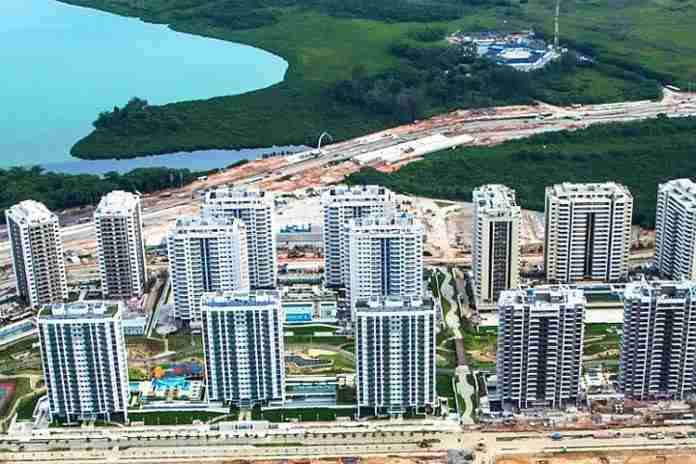For more than a century, the International Olympic Committee asked cities to stage its Olympic Games, often requiring the building of new housing, hotels and stadiums and arenas of all sizes.
If the current path of the IOC’s new direction under German chief Thomas Bach continues, the logical conclusion will be a Games that comes and goes without much more than a few pictures to remind everyone that it happened.
Over the first two days of its Executive Board meeting in Lausanne, Switzerland, the IOC signaled two major changes in the way future Olympic Games will be staged, departing once again from the standard procedures of more than a century.
The first is already underway for the Paris 2024, the second won’t be in place for more than a decade, but it’s also on the way.
(1) The IOC’s Executive Director for the Olympic Games, Christophe Dubi (SUI), announced that the Paris 2024 organizers have begun exploring a program to contract out the organization of the sports events to existing companies which already manage similar programs.
Comments on the Paris 2024 report to the Board, Dubi noted that “They also explained that for each of the sports and the disciplines, they are looking for current operators in the market.
“They are doing this research, and what will come out of Paris is a different organizing model, one that can build on the strength of the national sports and the operators, something that we pushed and we are very proud that they are heading in this direction.”
This is already happening in other large-scale events; the outdoor endurance events of the 2015 Special Olympic World Games in Los Angeles were quite successfully contracted to Spectrum Sports Management, which provided the management team and planning for their events, integrating the organizing committee’s requirements for other areas into its plan.
Similarly, the Tokyo 2020 organizers contracted out – to the dismay of some of the international federations – the organization of many of the test events.
But using this model for the sports competitions at an Olympic Games is an expansion of the concept and is designed to further compress the organizing effort. It won’t work everywhere, but it’s an interesting idea that will have some applications for Paris 2024 and could have more for Los Angeles in 2028.
(2) More startling was the announcement that the 2022 Youth Olympic Games in Dakar, Senegal, will almost halve the number of beds required for athletes and teams to 2,650, despite planning for a record number of 4,564 athletes, up from 4,000 from the 2018 event in Buenos Aires (ARG).
This will be achieved by housing most of the athletes in two “waves,” keyed to their competition schedules. The first wave will come in prior to the Opening Ceremony, compete and then leave; the second will come for the final week. IOC Sports Director Kit McConnell (NZL) explained:
“So, all of the athletes will stay in the Youth Olympic Village rather than spreading out in accommodation outside . The two waves, obviously, varies by sport. There are some sports – team sports, or weight-category sports – where you can only fight every couple of days for the recovery period that is spread out a little bit longer over the two waves. But in the general case, the athletes arrive a few days before their competition and leave afterwards, but still fully engage in all of those particular athlete education, engagement, fun activities, learning activities that we have around the Youth Olympic Games as well.
“All of them will be part of either the Opening or the Closing Ceremony; some both, where the schedule stretches in between, right across the Games, but most are one or the other. And you can see by the numbers, if we are looking at 4,500 athletes in Dakar, and a maximum of 2,650, then the vast majority are there for one of the two waves, but some of them are spread across.”
Sounds logical, right? But this is a major change in the nature of an Olympic Village, which has always been required to host everyone for the entire length of a Games. And that requirement has always come with a enormous cost of building a major new housing project, to be used first for the Olympic Games (or Youth Olympic Games).
The IOC has changed this requirement, using its favorite testing ground, the Youth Olympic Games. McConnell noted the financial impact goes even further:
“The other benefit is it also gives us more flexibility in terms of use of venues. So, by adding a few more competition days in Dakar, compared to Buenos Aires, we can actually use less venues for the same number of sports. And finally, if an athlete did want to stay, I think we would obviously look to support that bearing in mind if the Village capacity was available, we would be looking to engage with that athlete and that NOC as much as possible.”
The YOG was held over 12 days in 2018; although the dates have not been announced for Dakar, watch for the Games to expand to nearly the same two full weeks of the regular Olympic Games.
McConnell was asked quickly about whether this model will be applied to the Olympic Games, and when. He was quick to discount any immediate applicability:
“We’re not looking to implement it at the Olympic Games. It’s something very specific to the Youth Olympic Games. Obviously, part of the experience of the Olympic Games remains for the athletes to be in the Olympic Village for the whole period, so we’re not looking to extend that to the Olympic Games themselves. But as I have highlighted, I think it gives real flexibility and additional positive possibilities around the Youth Olympic Games, but no, not planned to be the model for the Olympic Games with that athlete experience in the Village is very precious and we’ll keep it the way it is.”
Sure, for now.
After committing to using existing venues to the furthest extent possible, the IOC is now beginning to attack another large cost center of an Olympic Games – the Village – with the same determination to lower the cost of staging the event. And despite McConnell’s quite correct assertion that no change is planned for the Olympic Games now – Paris ‘24 is building new housing and Los Angeles ‘28 will use the massive UCLA student housing program – watch for changes after the 2022 experiment in the IOC’s testing ground – the Youth Olympic Games – is completed.
Have no doubt; this is a revolution, and the cost of athlete housing was the biggest infrastructure requirement that was still on the table. With the next Games to be awarded well in the future – 2032 – this is the start of another new cost-reduction measure that will be welcomed by potential future hosts.
And look for the IOC to use this concept – in the future – to try to add more sports, events and total athletes to the Olympic Games, by shuttling them in and out of the host city in waves, although the number of athletes in some sports will have to be reduced to get their competitions completed quickly.
¶
Most of the headlines from the Executive Board meeting came from the announcements concerning the re-arrangement of the marathons and race walks for Tokyo 2020, now to be held in the 1972 Olympic Winter Games city of Sapporo.
The five events – two marathons, the men’s 50 km walk and the men’s and women’s 20 km walks – will be held over four consecutive days at the end of the Games period:
● 6 August: Men’s 20 km Walk, at 4:30 p.m.
● 7 August: Men’s 50 km Walk, at 5:30 a.m.; Women’s 20 km Walk, at 4:30 p.m.
● 8 August: Women’s Marathon, at 7:00 a.m.
● 9 August: Men’s Marathon, at 7:00 a.m.
Short loop courses will be used for the 20 km events (1 km loop) and 50 km (2 km loop). The marathons will use a 20 km opening loop course, but the last half of the race is yet to be confirmed. One of the ideas is to have the back half run in three loops of a 7 km course so that athlete services and medical attention can be more readily available, as it was in Doha for the midnight marathons during the IAAF World Championships in September and October.
Dubi also made it clear that the IOC will look at funding only the marginal cost difference between holding the event in Tokyo vs. in Sapporo. He called the costs “fairly limited” for Sapporo, but that is yet to be determined.
The IOC Executive Board will finish on Friday; you can check out Bach’s post-meeting news conference here. For him, the only constant is to keep changing the way the IOC operates and that its events are organized. The YOG experiment in limiting housing costs is one of the innovative yet, and he’s certainly not done.
Rich Perelman
Editor
You can receive our exclusive TSX Report by e-mail by clicking here. You can also refer a friend by clicking here.
















